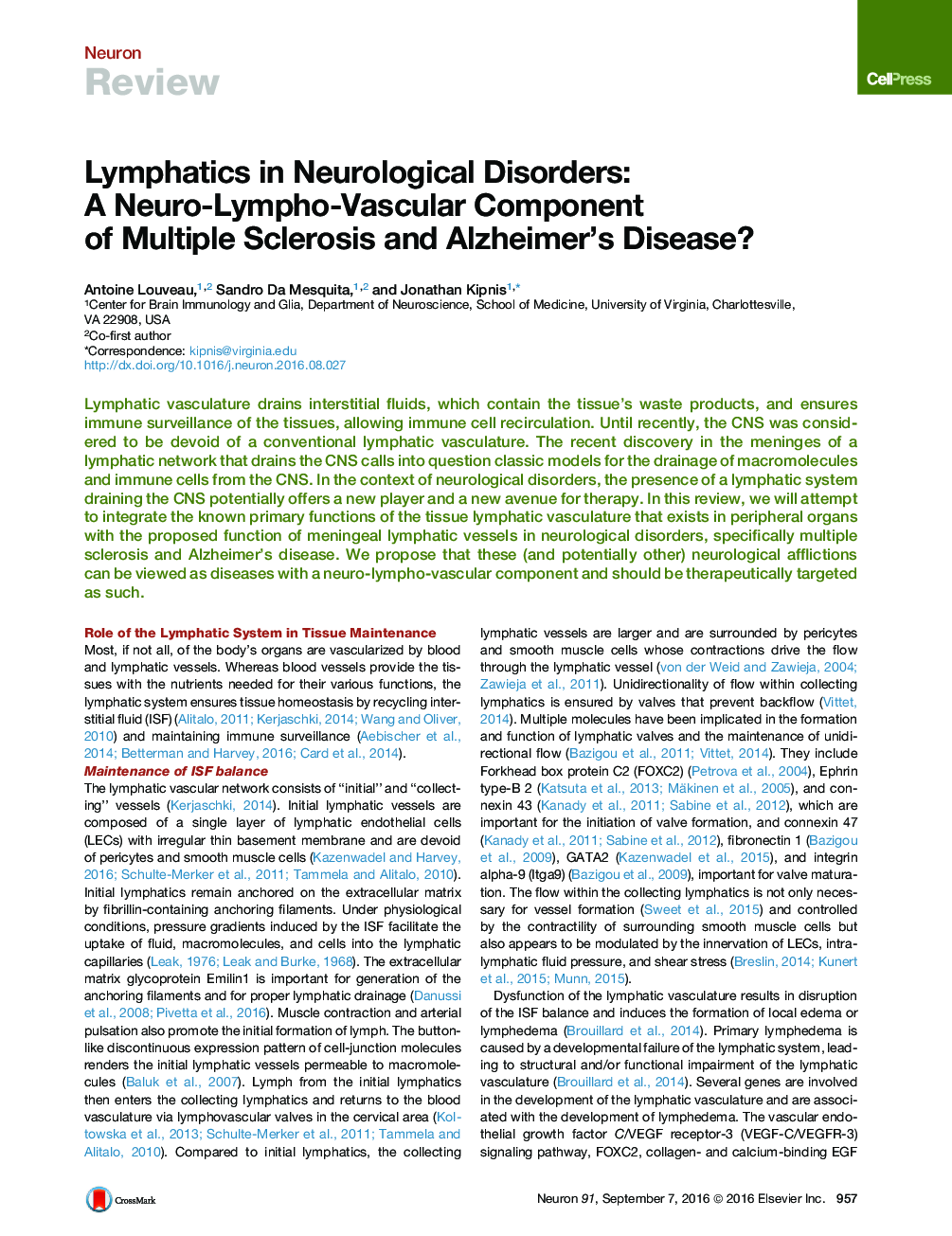| Article ID | Journal | Published Year | Pages | File Type |
|---|---|---|---|---|
| 4320604 | Neuron | 2016 | 17 Pages |
Lymphatic vasculature drains interstitial fluids, which contain the tissue’s waste products, and ensures immune surveillance of the tissues, allowing immune cell recirculation. Until recently, the CNS was considered to be devoid of a conventional lymphatic vasculature. The recent discovery in the meninges of a lymphatic network that drains the CNS calls into question classic models for the drainage of macromolecules and immune cells from the CNS. In the context of neurological disorders, the presence of a lymphatic system draining the CNS potentially offers a new player and a new avenue for therapy. In this review, we will attempt to integrate the known primary functions of the tissue lymphatic vasculature that exists in peripheral organs with the proposed function of meningeal lymphatic vessels in neurological disorders, specifically multiple sclerosis and Alzheimer’s disease. We propose that these (and potentially other) neurological afflictions can be viewed as diseases with a neuro-lympho-vascular component and should be therapeutically targeted as such.
